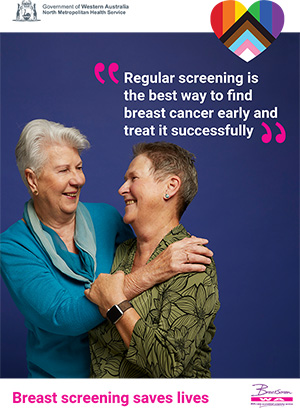
Robert La Bua arrives in one of the world’s politically outcast nations and finds a thriving gay subculture.
Syria is a colourful country in a black-and-white world. It gets a lot of bad press in the West, mostly because the Syrian government doesn’t toe the line drawn by its Western counterparts with regard to its views on international affairs. This, however, is no deterrent to an enjoyable visit in a diverse, friendly, and well-fed nation with a fascinating history and proud people.
Surprisingly, our expectation of Middle Eastern cultures suppressing gay and lesbian people is nowhere to be seen in Syria, where my first stop after Baggage Claim happened to be a café staffed by the most flamboyant, sweet-natured of waiters serving a roomful of men who cared far more about the quality of their coffee than the orientation of the man bringing it to the table.
We hear ‘Middle East’ and are trained to picture conflict, strife, and discord. How erroneous not to consider also the balmy climate, hospitable locals, and beautiful sights to be seen. The diverse attractions of Syria are well known to Earth’s sophisticated travelers; UNESCO World Heritage sites such as Damascus, Palmyra and Aleppo have attracted them for years. Like Turkey, its neighbour to the north, Syria is a secular country whose live-and-let-live attitude is typical of Mediterranean European societies.
Frequently billed as the longest continually inhabited city in the world, Damascus is home to a cosmopolitan mix of people from diverse ethnicities and economic statuses. It is a city of atmosphere: observe bakers preparing their cheese-filled pastries in open-fronted shops; inhale the abundant fragrances sweet and pungent in the souks—Syria tantalises the senses.
Unlike the relentlessly negative press meant to keep public opinion in Western societies at odds with a nation that does not conveniently fall into line with their governments’ policies, Syria is a very relaxed place where traditional Muslim culture coexists with an array of others without incident. Maybe it has been a blessing in disguise that Syria has been a political outcast for the past forty years; none of the factionalising propaganda from the outside has infiltrated to create social chasms where before there were none. That’s why you can see women walking down the street in full-length hijab holding hands with their daughters clad in hot pants and a tube top, and why two males holding hands no matter what they are wearing is simply seen for what it is rather than an implication of anything more than a sign of affection between two men.
There are three must-see sights in Damascus: Umayyad Mosque and its glorious mosaics, the blue interior of the glitzy Sayyida Ruqayya Mosque and the beautiful rooms of Azem Palace. These, of course, are in addition to the sights seen in the Old Souk, a never-ending parade of live entertainment. Damascus has the most muscular men in the Middle East, and since both climate and attitudes lend themselves to summer clothing, bulges abound.
Aleppo, in northern Syria, packs in the action without losing grace. Lording over the city is The Citadel, an enormous complex built on a hill to the east. Outside Aleppo is Qal’at Samaan, the ethereal site of Saint Simon’s church on a bluff dramatically overlooking the Antioch plains- well worth a visit. South of Aleppo in Maarat an-Numan is the splendid Murad Basha Khan al-Maarah Museum. Mysteriously absent from most guidebooks, the museum has the best collection of ancient mosaics in the country. Less than two kilometres away is Tower Restaurant on the Aleppo-Damascus Highway, where the chouaibiat is extra special. If you are not yet a fan of this Syrian pastry made with pistachios, cheese and rosewater, one stop here will win you over.
Syria’s many fortresses are sturdy reminders of its Crusader past. Most splendid is the magnificent Qal’at al-Hosn, more commonly known as Crac des Chevaliers. This imposing fortress served as the sentinel for the important Homs Gap mountain pass, the sole route between the inland settlements and the all-important towns and sea routes on the coast. Today Crac des Chevaliers is the world’s best-preserved medieval citadel and as such is an important architectural treasure. It still attracts hordes, only now their swords and lances are replaced with cameras and guidebooks.
Rivalling Crac des Chevaliers is Qal’at Saladin, set in a beautiful gorge high in the mountains near the resort town of Slenfeh. Saladin’s extraordinary setting on a rocky outcrop falling away steeply on three sides is augmented by the enormous, deep channel cut through the bedrock across the one side of the promontory (formerly) accessible by land, thereby cutting off the fortress entirely save for a single drawbridge.
Though the castles and fortresses of Crusader Syria are impressive enough, the Roman ruins at Palmyra still reign as the most visited tourism site in the country. Similarly evocative is Apamea, near Aleppo, less visited but equally captivating, nonetheless.
The most beautiful place to sleep in Syria is undoubtedly Beit al Mamlouka, the magnificently restored Damascene home-turned-exclusive hotel run by the meticulous May Mamarbachi, whose abundant taste (and money) combined to create a serene retreat, worlds away from the hustle and bustle of the Old City just outside the front door. You may think you have rubbed Aladdin’s lamp when stepping through the doorway of this very special place where antique does not equal antiquated. There is complimentary WiFi and satellite TV. To fall asleep to the tinkling of your private fountain in the popular Suleyman, The Magnificent Suite is complete bliss but you may not want to sleep at all once you lie down and see the splendid ceiling.
MORE INFORMATION
www.syriatourism.org
www.almamlouka.com
UPDATE: Since the publication of this article the Australian government has updated it’s official travel advice and now warns Australians not to visit this country due to military conflict.
Robert La Bua




